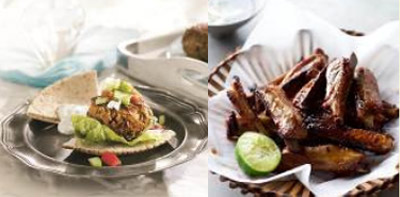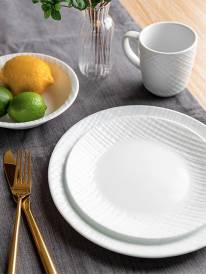Lamb the Must-Have for Spring

Lamb the Must-Have for Spring
Spring is in the air and there's no better way to celebrate than with the season's hottest ingredient – juicy, tender lamb.
While Australians are lucky to enjoy quality lamb all year round, spring is when delicious lamb is in peak supply, making it easy to match with spring's abundant fresh produce. Dress up lamb with a medley of colourful vegetables and fragrant herbs including rosemary, basil and thyme.
While trusty chops and cutlets are a family favourite at meal time, get creative this spring and experiment with interesting cuts such as ribs, shoulder and mince. These cuts are delicious, trendy and offer great value. They also work well with international flavours and cuisines making lamb the perfect staple for your spring recipe collection.
 Ribs
Ribs
Cooking Method:
Pan fry / grill: Cut into individual ribs and trim any excess fat, leaving some fat for flavour and juiciness. Finish in the oven to ensure the meat is cooked through.
Roast: Lamb ribs contain a high amount of fat and connective tissue so roasting at a lower temperature for longer allows the fat to render and the connective tissue to break down.
Braise: Keep bones in or remove beforehand.
Global Flavours:
France: Lamb rib daube is the perfect comfort food, or the lamb rib BLT is the ultimate sandwich for a lighter meal.
U.S.: Mini tacos filled with smoked BBQ lamb ribs, crispy cubes of skewered smoked lamb, lamb pancetta, lamb rib sandwich or braised lamb with spinach and minted yoghurt.
Butchery Specifics: Consisting of layers of full flavoured meat and rich lamb fat. Lamb ribs contain a portion of rib bones which can be cut into individual ribs. The ribs are prepared from a lamb breast by a straight cut between the 5th and 6th ribs. There are two rib sections per carcase.
Shoulder
Cooking Method:
For Bone In shoulder:
Roast: Remove the feather and chine bones before roasting. Leave the ribs bones if desired to produce a forequarter rack/shoulder rack. Leave some fat cover on top of the shoulder.
Slow cook: Cut shoulder into large pieces keeping the bone in and braise over low heat until the meat falls off the bone. The connective tissue will break down during the cooking process adding flavour and a gelatinous texture.
For Boneless shoulder:
Roast: Truss shoulder to retain shape. Trim fat to desired level but ensure there is some fat coverage to maintain moisture.
Thin slice: For cooking quickly over high heat (e.g. for skewers and Korean or Japanese style BBQ dishes), first chill the boneless rolled shoulder and then slice very thinly (2mm) on a slicing wheel. Marinating the thin sliced meat for several hours will assist in tenderisation.
Global Flavours:
Jordan: The national dish is Mansaf: lamb on the bone seasoned with herbs and spices, cooked in yoghurt and served with rice and nuts. The layers of connective tissue in shoulder melt in the cooking process adding flavour and texture to the dish.
India: aromatic lamb Pasanda from Northern India curry, made with flattened strips of lamb cooked in a creamy yoghurt sauce flavoured with cumin, garam masala, ground almonds, cinnamon and garlic.
Morocco: One of the most famous of Moroccan dishes is the lamb tagine.
Butchery Specifics: The Shoulder is prepared from a forequarter by removing the neck with a straight cut between the 3rd and 4th cervical vertebrae. The breast and fore shank are removed by a cut commencing at the junction of the 1st rib and 1st sternal segment continuing to the specified rib running parallel to the backbone. There are two shoulders per carcase.
Mince
Cooking Method:
Grill: Forming mince into burger patties or rissoles is perfect for grilling. Always cook mince to well done, to ensure all bacteria is destroyed in the heating process.
Roast: Baking is a variation of roasting that suits mince meals. For a twist on meatloaf, lamb can take on some bold flavours – think lamb moussaka.
Simmer: Sear or sauté the mince before adding other ingredients to caramelise the sugars in the meat and bring out its natural sweetness.
Stir fry: Ensure the mince is not too lean so that it does not become too dry and crumbly.
Global Flavours: Lamb mince is used in cuisines around the world to make some classic dishes such as Greek Moussaka, Spanish Empanada, Lebanese Kibbee, Turkish Kofte, Syrian Chiche Barak, English Sheppard's Pie, Turkish Gozleme, Sri Lankan Frikadells or Moroccan lamb mince tagine.
Butchery Specifics: Unless specified, mince or ground lamb is produced from lamb trimmings.
For luscious lamb recipe suggestions, visit www.themainmeal.com.au
MORE



